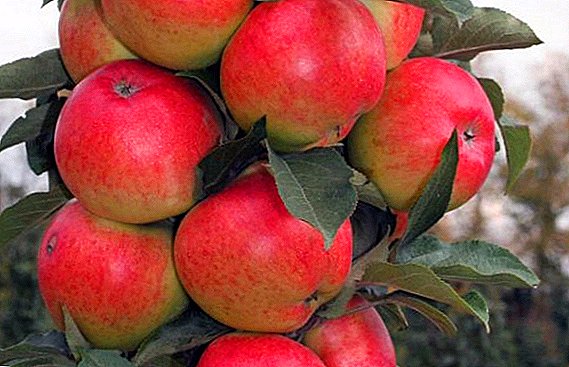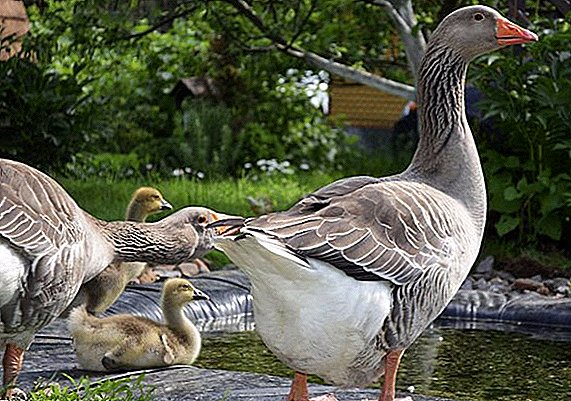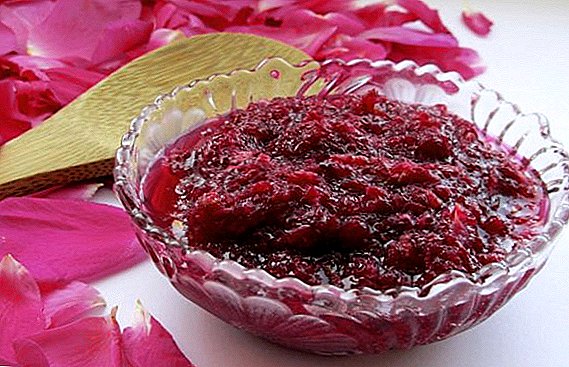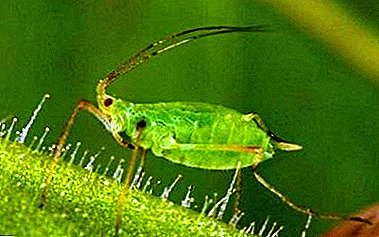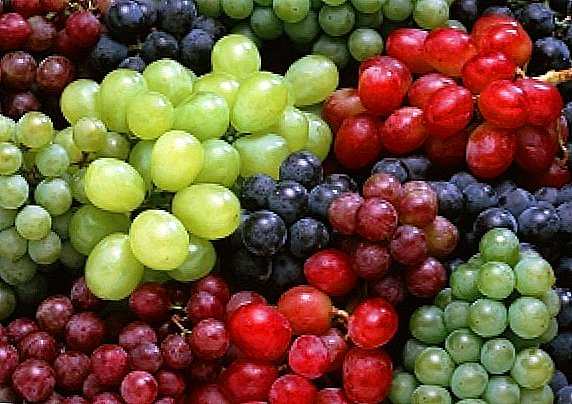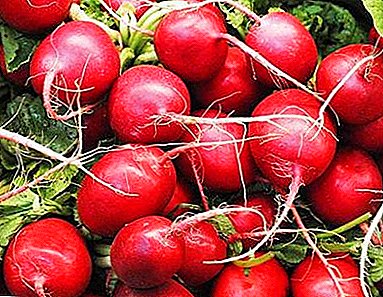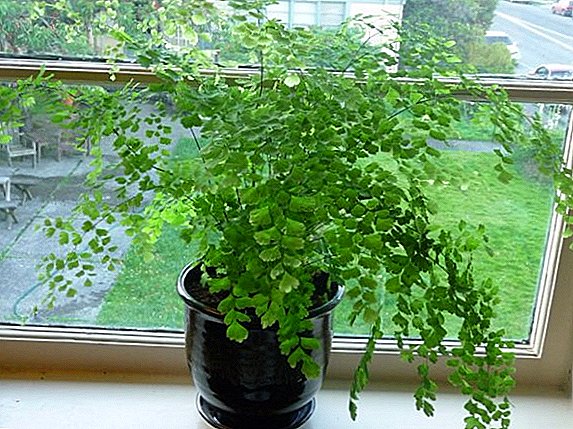 Gooseberry fruit is one of the favorite and very useful summer delicacies. This perennial plant in our area is widely popular and today there are about one and a half thousand varieties of shrubs. However, in this article we would like to consider the best varieties of bespishny gooseberry.
Gooseberry fruit is one of the favorite and very useful summer delicacies. This perennial plant in our area is widely popular and today there are about one and a half thousand varieties of shrubs. However, in this article we would like to consider the best varieties of bespishny gooseberry.
"African"
African gooseberry is 1.2 m tall, and medium wide. The grade differs in early fructification and big productivity. With good care brings the first fruits of the next year after planting. With an adult bush, you can collect a whole bucket of fruit for the season. Berries of black and dark purple flowers can be large and medium size. The taste of this variety is sweet and sour, a bit like black currant. 
"African" is a gooseberry, resistant to diseases and pests, which also tolerates winter frosts. He is not afraid of powdery mildew or aphids, and the only disease that, with inadequate care, can threaten the plant is anthracosis (its presence is indicated by the appearance of brown spots on the foliage). Due to such features, the variety is most suitable for regions with a humid climate.
Important! To yield "African" was high, in no case can not thicken the landing. In addition, from the third year of growth it is necessary to cut the ends of the branches tilted to the soil, and from the fifth - leaning to the ground and poorly developed branches.In the autumn it is recommended to fertilize bushes with manure (about 5 kg under an adult bush), superphosphate (40 g under a bush) and potash (30 g under a bush) fertilizers. During the formation of the ovary, to increase the yield of the plant can be fed infusion of mullein.
"Grushenka"
The variety got its name due to the unusual shape of the fruit, resembling a pear. Shrubs of this gooseberry are medium thick (up to 1.5 m in height), slightly sprawling, and have dense foliage. Fruits are medium in size, purple with thick skin. The taste of berries is sweet and sour. "Grushenka" belongs to medium-late varieties, it is characterized by a short period of fruiting. The yield level is average, but about 6 kg of fruit can be harvested from an adult bush. 
The benefits of the variety include:
- resistance to fungal and viral diseases;
- good tolerance of winter frosts, high temperatures, droughts;
- ease of transportation;
- the possibility of using both fresh berries and canning, use in cooking;
- fruits do not crack, long hold on the branches;
- short period of fruit ripening;
- fruiting period is about 20 years;
- unpretentious to the composition of the soil.
Did you know? The fruits of the "Grushenka" variety are very rich in ascorbic and folic acid, thiamine and beta-carotene. It is useful to use them for hypertension, dental diseases and disorders of the menstrual cycle.The best period for planting gooseberries is autumn. "Grushenka" loves sunny windy areas and does not tolerate transfer from place to place. For good yields, the bushes should be periodically loosened, watered during droughts, and regularly cut off weak branches (starting from the second year of growth). In spring and autumn, the plant is recommended to be fertilized with superphosphate, compost and potassium chloride.
"Kolobok"
Gooseberry "Kolobok" - medium wide, distinguished by dense foliage and strong branching bushes. The weight of large berries can reach 8 g, medium - 3 g. Fruits are dark red in color, sweet and sour, can be round and oval. The skin of the berries is not very tight. 
The advantages of the variety include:
- good survival of bushes;
- long stay of fruits on the branches;
- resistance to powdery mildew and anthracosis;
- Perfect for winter harvesting.
For good yield, it is important to timely prune shoots. In the second year of growth, it is recommended to remove underdeveloped branches that have not reached 20 cm, and those that have bent close to the ground. In the future, every year you need to cut the shoots, strongly wilted to the soil. In addition, we should not forget about making compost, potash and phosphate fertilizers in the autumn and spring periods.
Important! It is not recommended to plant gooseberries in places where raspberries and currants were previously grown. This can lead to plant disease.
"Commander"
Shrubs of this variety reach medium height, slightly sprawling, have a dense deciduous cover. Fruits are purple, round. The rind of the fruit is thin, without a gun. Berries are medium in size, and one unit weighs about 5 g. It tastes sweet gooseberry with a weak acidity. 
“Commander” is a mid-early variety of gooseberry, that is, it starts producing crops already in the middle of May. The benefits of the variety include:
- high yields;
- resistance to powdery mildew, anthracosis, apha;
- winter hardiness;
- pleasant aroma;
- well suited for winter preparations;
- berries hang on the branches for a long time, while not cracking in late harvest.
When planting "Commander" pay attention to the fact that he does not like places where moisture stagnates, and loamy and sod-podzolic soils are the best option for landing. Therefore, heavy soil is recommended to drain wood sawdust. Another important point is the frequent watering of bushes in the summer.
Did you know? Berries of this variety have practically no pits. In addition, it is one of the sweetest varieties of gooseberry, for which he gained wide popularity among gardeners.
"Malachite"
Bushes of medium height (height up to 1.3 m), spreading and dense. The leaves are large, have a green color with a shade of gray. Round berries, rather large, in weight reach 6-7 g. 
The color of the fruit is green, and light yellow specks form at the place where the sun hits. The peel is thin, lint-free. The taste of berries - sour, but they contain a lot of ascorbic acid.
Gooseberry malachite is highly resistant to cold. In addition, he is not afraid of drought and fungal diseases, and he tolerates transportation. Refers to medium-early varieties. Productivity is average: it is possible to gather up to 4 kg of fruits from one bush. Differs in long fructification.
Important! Only ripened fruits should not be plucked from the bush immediately. Give them another ten days to ripen in the sun and they will become sweeter.When caring for the bushes should be remembered that the roots are close to the surface of the soil, so loosening should be carried out carefully. During periods of drought, gooseberries need to be watered.
"Lights of Krasnodar"
A very popular variety of gooseberry. The berries in this variety are round, large and sweet, have a charming bright red color. Fruits in weight reach 9 g. 
Bushes - semi-sprawling, medium density. The advantages of the variety include:
- resistance to frost and drought;
- resistance to fungal and viral diseases;
- good survival in all climatic conditions;
- undemanding to the soil.
"Eaglet"
Shrubs of this variety in height reach up to 1.2 m, and belong to medium-sized plants. The berries are round, have a beautiful dark red color with a black tint. It tastes sweet and sour.
 The eaglet stands out for good yield, since it is possible to collect about 7 kg of pods from one bush. It is unpretentious to the composition of the soil and climatic conditions, tolerates winter frosts and is fairly resistant to fungal diseases.
The eaglet stands out for good yield, since it is possible to collect about 7 kg of pods from one bush. It is unpretentious to the composition of the soil and climatic conditions, tolerates winter frosts and is fairly resistant to fungal diseases.
The fruits of this variety are very useful. They contain large amounts of folic acid, vitamin C and serotonin, known for its antitumor properties. In addition, the Eaglet berries help cleanse the body of toxins.
Did you know? Yield bushes "Eaglet" will increase significantly if you plant a variety of tomatoes "Mikado", garlic or onions not far from it.For good growth and fruiting, it is recommended to feed the bushes twice per season by spraying with a solution of boric acid (1 tbsp per 10 liters of water). It is not allowed to thicken the planting of bushes, therefore, from the second year of growth, it is necessary to regularly trim.
"Northern Captain"
Bushes of this variety in height can reach 1.5 meters. They are medium-sprawling, have thick bright green foliage. The berries have a round shape, a dark red color with a waxy coating. Peel - medium density. 
Gooseberry "Northern Captain" has a very high yield and belongs to the varieties of medium-term ripening. Despite the fact that the berries hang on the branches for a long time, they do not crack and do not frown.
Important! Shrubs of this variety gooseberry self-pollinated, making it advantageous to plant in areas where there are not a large number of insect pollinators.The plant tolerates winter, resistant to fungal, viral diseases and such common pests as the sawfly and moth. He likes well-lit terrain, does not tolerate excessive moisture.
"Ural"
Belongs to late-ripening, large-fruited varieties of gooseberry. Shrubs - medium height, half sprawling, foliage density - medium. The berries are oval, and in weight reach 8 grams. The color of the fruit is bright green, the skin is dense, it tastes sweet-sour and very juicy. 
The Uralsky variety possesses high yields, since up to 8 kg of fruits can be harvested from one bush. It tolerates winter frosts, is resistant to fungal diseases and insects such as sawflies and firebugs.
"Prunes"
This gooseberry belongs to the mid-early varieties. Shrubs - medium height, medium-sprawling, not too thick. The shape of the berries is oval and pear-shaped. Weight fruits reach 4 g. Peel black color with a waxy bloom. 
Variety "Prunes" is characterized by good resistance to frost and fungal diseases. The yield level is average (about 5 kg of berries are harvested from one bush). The fruit is sweet and sour.
There are many more varieties of nekolyuchy gooseberry, but we have considered the best of them. They bring a good harvest, perfectly take root in our climatic conditions, tolerate frost well, and are resistant to diseases and many pests.


